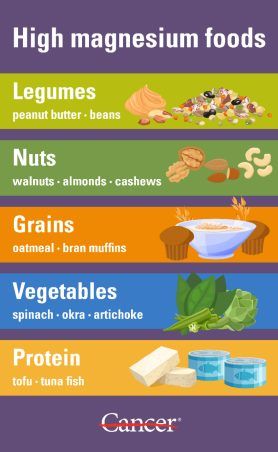Magnesium Benefits and How to Get Enough Naturally
In the world of technology, we often focus on the latest gadgets and advancements, but it’s important not to overlook the basics of health and wellness. One key mineral that often gets overlooked is magnesium. Magnesium is essential for over 300 biochemical reactions in the body, making it a crucial element for overall well-being.
The Benefits of Magnesium
There are numerous benefits to ensuring you are getting enough magnesium in your diet. Some of the key benefits include:
Energy Production: Magnesium plays a crucial role in converting food into energy, making it essential for optimal energy levels.
Muscle Function: Magnesium is vital for muscle function, including relaxation and contraction, making it important for athletes and those leading an active lifestyle.
Heart Health: Magnesium helps regulate blood pressure and support heart health, reducing the risk of cardiovascular diseases.
Bone Health: Magnesium is essential for maintaining strong and healthy bones, making it important for preventing osteoporosis.
Mental Health: Magnesium plays a role in brain function and mood regulation, with some studies suggesting it may help reduce symptoms of depression and anxiety.
How to Get Enough Magnesium Naturally
While magnesium supplements are available, it’s always best to try to get your nutrients from natural sources whenever possible. Some of the best sources of magnesium include:
Nuts and Seeds
Almonds, cashews, and pumpkin seeds are all excellent sources of magnesium. Adding these to your daily diet can help boost your magnesium intake.
Leafy Greens
Spinach, kale, and Swiss chard are all rich in magnesium. Incorporating these greens into your salads or smoothies is a great way to increase your magnesium levels.
Whole Grains
Whole grains such as brown rice, quinoa, and oats are good sources of magnesium. Opt for whole grains over refined grains to maximize your nutrient intake.
Beans and Legumes
Black beans, chickpeas, and lentils are all packed with magnesium. Adding these to soups, stews, and salads is a delicious way to get more magnesium in your diet.
Seafood
Fatty fish like salmon and mackerel are not only rich in omega-3 fatty acids but also contain magnesium. Including seafood in your diet a few times a week can help increase your magnesium intake.
Dark Chocolate
Yes, you read that right! Dark chocolate is a surprisingly good source of magnesium. Opt for dark chocolate with at least 70% cocoa content to get the most magnesium benefits.
Final Thoughts
Ensuring you are getting enough magnesium in your diet is essential for overall health and well-being, especially in the fast-paced world of technology. Making small changes to incorporate magnesium-rich foods into your meals can have a big impact on your energy levels, muscle function, heart health, bone health, and mental well-being. So next time you reach for a snack, consider choosing a magnesium-rich option to support your body and mind.
Remember, technology is only as good as the person using it, so prioritize your health and well-being to continue thriving in the tech world.


